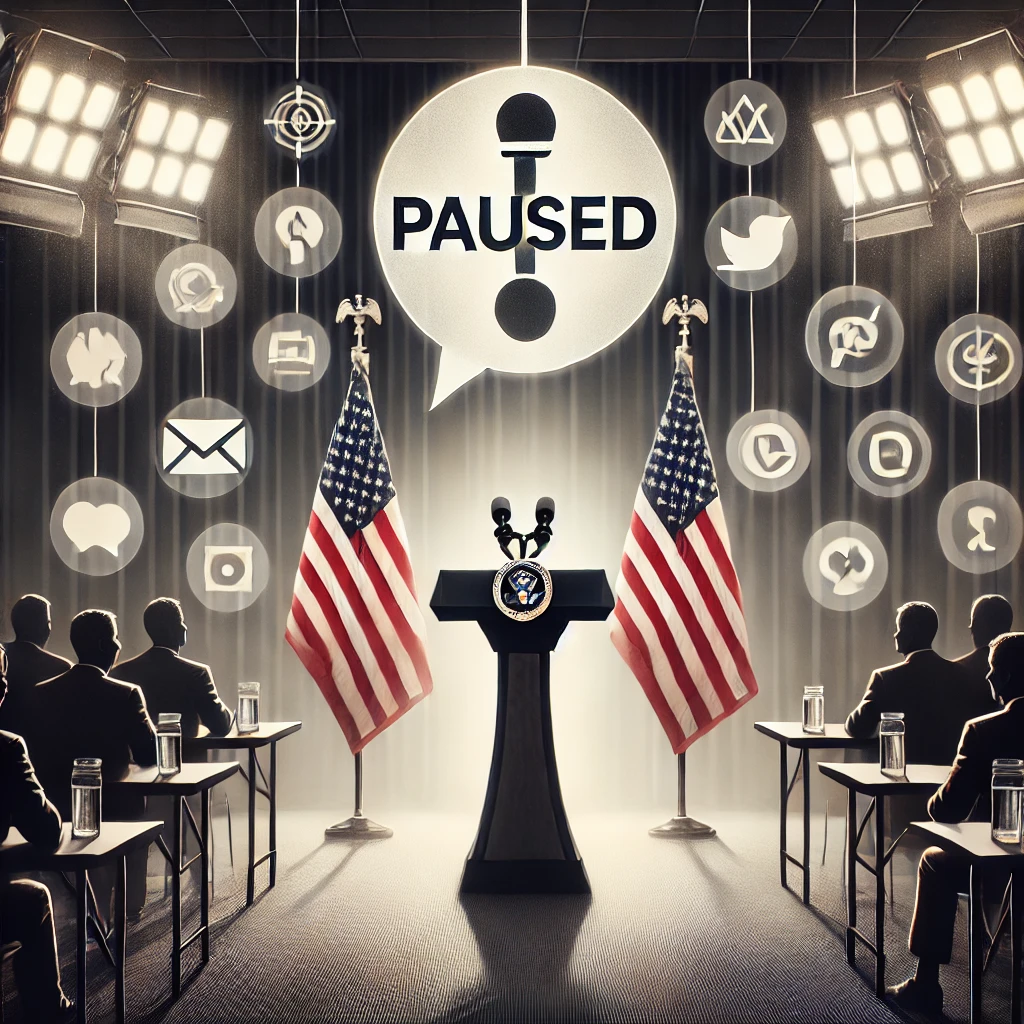Trump Officials Pause Health Agencies’ Communications: Safety vs. Control
When the Trump administration returned to power, one of its first moves was surprising. Federal health agencies were told to stop sharing information with the public.
This pause covered the Centers for Disease Control and Prevention (CDC), the Food and Drug Administration (FDA), the National Institutes of Health (NIH), and other health offices under the Department of Health and Human Services (HHS).
Websites stopped updating. Social media went silent. Even the CDC’s Morbidity and Mortality Weekly Report (MMWR)—a key health bulletin that had been published every week for decades—was delayed.
Officials said this was only to bring “message discipline” during the transition. But many experts warned it was risky. Important alerts about food recalls, new diseases, or drug approvals could be slowed down.
What Was Paused
The freeze was wide and unusual.
Agencies Affected
-
CDC – stopped regular disease bulletins and outbreak warnings.
-
FDA – held back food recall notices and drug approval news.
-
NIH – paused announcements about research and grants.
-
CMS (Medicare/Medicaid) – slowed updates for providers and patients.
-
Other HHS divisions – all 13 divisions reportedly got the same order.

Channels Impacted
-
Press releases
-
Websites
-
Social media accounts
-
Newsletters and bulletins
-
Scientific reports (like MMWR)
-
Legal filings in the Federal Register
Exceptions Allowed
-
Some “critical health and safety” alerts, such as:
-
Food contamination recalls
-
Urgent warnings about disease outbreaks
-
Safety issues with drugs or medical devices
-
But even these had to get special approval, which could take time.
Read also: JD Vance Meme
Normal vs. New
In the past, some communication changes happened during new presidencies. But never as broad as this.
| Category | Usual Practice | Trump 2025 Order |
|---|---|---|
| CDC weekly bulletin (MMWR) | Always continued | Stopped for at least one week |
| Press releases | Sometimes slowed | Stopped for all agencies |
| Federal Register filings | Rarely affected | Paused explicitly |
| Disease outbreak alerts | Always continued | Needed approval first |
| Scope | Narrow | Broad, all 13 HHS divisions |
Timeline
-
Mid-January: Internal messages told agencies to stop outside communications.
-
Late January: Websites and accounts became silent.
-
Early February: A few exceptions approved; CDC slowly restarted its weekly reports.
-
Later Weeks: News outlets confirmed the unusual freeze and its impacts.
Impacts of the Pause
Public Health Impacts
-
Food Recalls: Risk of unsafe food reaching people.
-
Disease Alerts: States might not get quick updates on flu, measles, or other outbreaks.
-
Drug and Device News: Patients and doctors could miss safety notices or approval updates.
-
Research Sharing: Slowed down news about medical studies and grants.
Internal Impacts
-
Staff were confused about what could be shared.
-
Important updates piled up during the pause.
-
Workers felt pressure to hold back even routine information.
Reactions
Public Health Experts
-
Said the pause was “unprecedented.”
-
Pointed out that even in past transitions, reports like MMWR were never stopped.
Provider Groups
-
Hospitals, nursing homes, and labs worried about missing vital safety information.
-
Some warned this could even break legal duties to keep the public informed.
Political Responses
-
Critics: Called it political control of science.
-
Supporters: Said it was needed to stop mixed or confusing messages.
Legal and Policy Issues
The freeze raised questions such as:
-
Legal duty: The FDA and CDC are required by law to warn the public about certain risks. Was the pause breaking these rules?
-
Federal Register: Laws and regulations must be published here before they take effect. A pause could create legal problems.
-
Transparency: The Freedom of Information Act (FOIA) may later show who approved the pause and how decisions were made.
Comparisons
-
Other countries: Most continue disease reporting during government changes. Health data is seen as non-political.
-
Past U.S. transitions: No other administration paused the CDC’s weekly MMWR report. This made the freeze stand out as highly unusual.
Risks and Safety Steps
Risks
-
Delayed warnings for the public.
-
Lower trust in health agencies.
-
Gaps in disease tracking.
-
Possible lawsuits over late notices.
Safety Steps Taken
-
Allowed some urgent exceptions.
-
Federal staff worked informally with states.
-
Reports started again after February 1.
Agency-by-Agency Effects
| Agency | Normal Work | Paused | Exceptions |
|---|---|---|---|
| CDC | Weekly bulletin, outbreak alerts | Reports, website updates | Only urgent outbreak alerts |
| FDA | Food recalls, drug notices | Recalls and approval postings | Major recalls and urgent warnings |
| NIH | Research, grant announcements | Press releases and web updates | Few or none, some allowed later |
| CMS | Guidance for providers | Website and notice updates | Only urgent provider alerts |
| HHS (all) | General communications | Social media, legal filings | Limited exceptions with approval |
The Main Debate
This pause created a debate with two clear sides:
-
For control:
-
Helps new leaders keep a consistent message.
-
Prevents mistakes or off-message statements.
-
-
For openness:
-
Public health info is not political and should not be delayed.
-
Even short silences reduce trust and can put people in danger.
-
FAQS
Who exactly ordered the pause?
-
We don’t have a public, official name.
-
It most likely came from top HHS leaders or the White House communications team during the transition.
-
Until documents or sworn statements are released, the exact person is unknown.
What rules decided which exceptions were approved?
-
Agencies were told that only “critical health and safety” messages could go out.
-
In plain terms: urgent items like food recalls or outbreak warnings could be approved.
-
The detailed rules (who approves, how fast, what counts as “critical”) were not fully shared, so the process felt unclear and slow.
Will Congress or the courts investigate this action?
-
They might.
-
Congress can hold hearings and request emails and memos.
-
Courts could get involved if someone files a lawsuit claiming the pause broke a law (for example, by delaying legally required notices).
-
Whether it happens depends on political will and whether groups bring legal cases.
Will future presidents copy this approach?
-
It’s possible, because transitions often try to control messaging.
-
But the pushback from health experts and the public may make future leaders more careful.
-
A better path would be a clear policy that protects urgent health information from any pause.
Conclusion
The Trump team’s pause of health agency communications was more than routine housekeeping. It was a strong show of control that cut off long-standing health reports and warnings.
The freeze ended after a few weeks, but its effect was lasting. It showed how quickly essential health updates could be stopped, and it raised fears that politics could override science and safety.
In the future, the U.S. must find a balance: leaders want message control, but the public needs fast, honest health information. Silence in public health is not neutral—it is dangerous.
